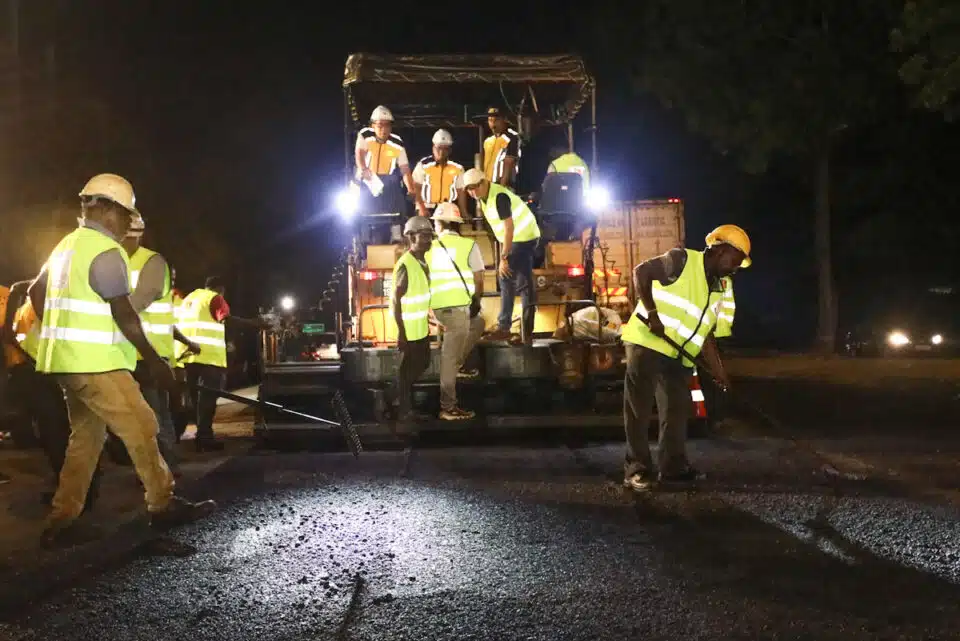By Selangor Journal Team
SHAH ALAM, June 7 — Recognising the need for effective solutions, the Selangor state government is turning to new technologies to alleviate the burden of maintaining its ageing roads, says state executive councillor for public amenities Izham Hashim.
New solutions in its arsenal include a new road-patching machine and exploring the use of modified road construction materials such as rubberised asphalt and shredded plastic to enhance the lifespan of road surfaces.
Dubbed the Jetpather, this costly but necessary investment has proven its effectiveness. Unlike current cold mix solutions, this machine utilises hot mix for road patching, ensuring superior results.
“With the Jetpather, there’s no need for road cutting. Simply fill the damaged area, and it will seamlessly integrate and form a durable bond. Additionally, we are also acquiring a thermal patcher and introducing modified asphalt, mixed with rubberised crumbs, shredded plastic, and even bamboo,” Izham stated during an interview with Selangor Journal on June 1.
Data-driven system for effective monitoring
Selangor, being the most developed state in the country, boasts an extensive road network spanning over 20,000 km, said Izham.
The state has implemented a road asset management system known as the Integrated Road Access System (i-RAA) to effectively manage this vast road network. Ira allows for monitoring and tracking of road conditions, including width, length, upgrades, resurfacing frequency, traffic patterns, and even potholes or damages.
“This data-driven approach helps predict maintenance needs and allows for more efficient routine maintenance.
“To promptly address road issues, the state government also pays attention to feedback received through social media and other channels. It maintains a record of problem areas and prioritises their upgrading efforts accordingly,” explained Izham.
i-RAA is being developed and managed by Infrasel Sdn Bhd, a company owned by the Selangor state government. In addition, vehicles equipped with cameras are being utilised to capture road defects, including potholes and drainage issues, added Izham.
Increasing budget for road maintenance
The state allocates an average annual budget of RM500 million solely for road maintenance purposes. However, this year, an additional RM50 million was approved by the state government to resurface and widen poorly maintained roads.
Announced on January 16 by Selangor Menteri Besar Dato’ Seri Amirudin Shari, the additional budget is designated as a mega road-paving project, which commenced in May.
However, Izham revealed that the state’s expenditure on road-related projects could reach nearly RM1 billion, covering the construction of new roads and ongoing maintenance efforts.
“Annually, we typically spend around RM500 million for road maintenance and associated costs. However, this amount doesn’t include the additional internal expenditures of local councils for road maintenance. When you consider all these costs, including the construction of new roads, the total spending on road infrastructure could easily reach RM1 billion per year,” he explained.
Addressing multiple challenges
While highlighting the state government’s commitment to upgrading its ageing road infrastructure, Izham also acknowledged the concerns raised by the public regarding the quality and longevity of road repairs and construction.
“There are a few key points to consider. Firstly, roads have limited lifespans. After around 20 years, more than 50 per cent of the roads in our country would have exceeded their intended lifespans. Therefore, it is necessary to upgrade these roads rather than just resurfacing them.
“Upgrading the road also involves addressing structural aspects, such as the sub-base, to ensure durability. However, due to limited funds, it’s not possible to upgrade all the roads simultaneously. Therefore, we follow a staggered approach, upgrading different roads each year. This is an important aspect to understand,” he elaborated.
Izham further explained that Selangor faces a higher-than-usual traffic volume on its roads, especially from heavy vehicles that often exceed weight limits to maximise profits. This challenge is compounded by a poorly maintained drainage system, resulting in stagnant water accumulation on roads, rapidly deteriorating road surfaces and leading to costly damages.
“This increases strain and stress on the roads compared to other states with less traffic. Moreover, our region has challenging soil conditions, including marine clay and peat. Because of these soil conditions, implementing piling throughout the entire road network is impractical and cost-prohibitive.
“The limited road lifespans, high volume of heavy-vehicle usage, risks associated with stagnant water and difficult soil conditions all contribute to the complexity of the situation. Managing all these factors is challenging, especially given the limitations of the budget,” said Izham.
Using a 2 km road in Johan Setia as an example, Izham mentioned that upgrading this particular stretch alone would cost RM48 million.
“A significant portion of the project cost, around 30 to 40 per cent, is attributed to relocating utilities such as water pipes and underground cables. This is another example of the challenges we face in upgrading roads,” he added.





